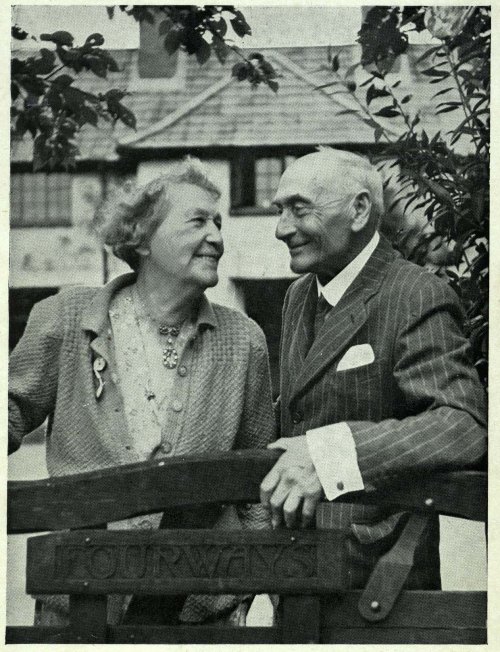Visitors to the Wren Library during the next few weeks will be able to see a special display case containing items from the Pethick-Lawrence collection. For those unable to visit, we have devised an online exhibition. Click on the top left box labelled Prologue to begin.

![peth7_48 i) PASSION: Emmeline’s letter to Fred on 27 June 1901, just after his first proposal of marriage, contains a heartfelt declaration of her commitment to socialism: “ ... my first consciousness was the clearest, strongest & most inveterate sense of the dignity & worth of the human body & soul above everything else ~ and this has forced me into life long campaign ~ against every sort of bondage, against all sorts of established authorities: and it is [this which] has kept me (not by choice but by inward necessity) always against the stream … This is the great contest of the coming century: the life and death struggle of human life against material mastery. ”](https://trinitycollegelibrarycambridge.files.wordpress.com/2016/11/peth7_48.jpg?w=229&resize=229%2C172&h=172#038;h=172)




For those who would prefer to examine the exhibits in more detail see below. Click on the images to open the document viewer.
PROLOGUE
Emmeline Pethick and Frederick Lawrence, both from middle-class backgrounds, met in 1900 through their involvement in social work in the East End of London.
Emmeline first came to London to manage a club for young working women, and she and her friend Mary Neal had gone on to establish their own club, with a related dressmaking business.
Fred, a Trinity man, had been inspired by the university settlement movement, the aim of which was to encourage university-educated people to live and work in deprived urban areas, and he was working at a settlement house in the East End when he met and fell in love with Emmeline.
Fred had been intending to pursue a career as a Liberal Unionist MP, but Emmeline, a fervent socialist, challenged him to reconsider his political views, and after a period of serious reflection, which included a trip to South Africa to observe the effects of the Boer War, he came to adopt a more radical position.
The couple married in 1901 and took the unusual step of linking their surnames.
PASSION
Emmeline’s letter to Fred on 27 June 1901, just after his first proposal of marriage, contains a heartfelt declaration of her commitment to socialism:
“ … my first consciousness was the clearest, strongest & most inveterate sense of the dignity & worth of the human body & soul above everything else ~ and this has forced me into life long campaign ~ against every sort of bondage, against all sorts of established authorities: and it is [this which] has kept me (not by choice but by inward necessity) always against the stream … This is the great contest of the coming century: the life and death struggle of human life against material mastery. ”
VOTES FOR WOMEN
From 1906 the Pethick-Lawrences were at the heart of the militant wing of the women’s suffrage movement, which they helped to organise and finance. Emmeline became treasurer of the Women’s Social and Political Union (WSPU) and devised its distinctive colour scheme of purple, white, and green:
“Purple as everyone knows is the royal colour, it stands for the royal blood that flows in the veins of every suffragette, the instinct of freedom and dignity … white stands for purity in private and public life … green is the colour of hope and the emblem of spring.”
Fred founded the newspaper Votes for Women, which he co-edited with his wife.
PRISON
Emmeline was imprisoned six times for her actions in support of the suffragette movement, and Fred also went to prison for the cause. Both endured forcible feeding while on hunger strike. These are some of the letters they were allowed to write to each other from prison:
CONSPIRACY
Some in the suffrage movement, including Emmeline Pankhurst and her daughter Christabel, felt that violent measures such as the smashing of shop-windows and arson were justified ways of drawing attention to the cause.
After a spate of window-breaking in March 1912 the Pethick-Lawrences were arrested and tried for conspiracy, even though they opposed this form of protest. This is the text of Emmeline’s speech to the jury.
The Pethick-Lawrences spent large amounts of money on legal costs and fines, both for themselves and others, and eventually had to auction the contents of their home, though they just escaped bankruptcy.
DIVISION
As a result of their objections to violent protest the Pethick-Lawrences were induced to leave the WSPU, though they continued to edit Votes for Women. These are two of the letters exchanged between the two Emmelines at this time:
EPILOGUE
In 1918 the suffrage movement in the United Kingdom finally began to see success, with the grant of the vote to certain categories of women over the age of 30.
After the First World War Emmeline Pethick-Lawrence became a well-known international campaigner for women’s rights and peace.
Her husband became a Labour MP. In 1942 he was briefly Leader of the Opposition, and as Secretary of State for India between 1945 and 1947 he was instrumental in the negotiations which led to that country’s independence. He was raised to the peerage in 1945.













